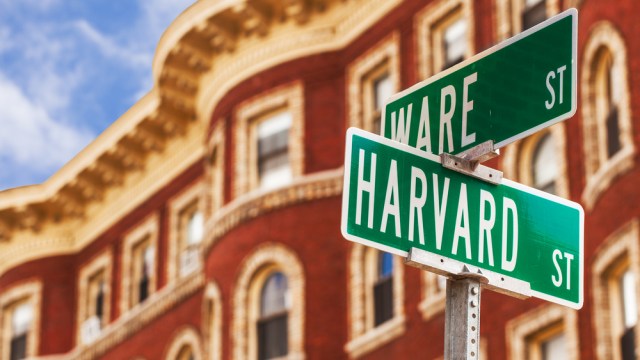How Mickalene Thomas Breaks Up the Modernist Boys Club

When Pablo Picasso and other early modernists appropriated elements of so-called “primitive” African art for Cubist and proto-Cubist works such as 1907’s Les Demoiselles d’Avignon they perpetrated a kind of artistic colonialism similar to the economic colonialism that brought back African treasures to French museums and galleries in the first place. It was an exclusively European, almost exclusively male club that marginalized not just the African culture it emulated, but also the women that were often the subjects of their art. In Mickalene Thomas: Tête de Femme, African-American artist Mickalene Thomas breaks up the modernist boys club a century after its formation and takes aim at the lingering effects of its subtle misogyny and racism that continue in the visuals of our present-day culture.
Thomas has always taken on the sins of the art history canon in her art. The Odalisque genre itself, which has inspired artists ranging from Ingres to Matisse, came under Thomas’ scrutiny in her 2007 Odalisque series, which examined the politics of the genre’s eroticism-exoticism mix in the context of both African-American women in general and female same-sex relationships specifically (think not just Ingres’ solo Grande Odalisque, but also his male fantasy harem group shot The Turkish Bath). In Le Dejeuner Sur l’Herbe: Les Trois Femmes Noires, which appeared at the MoMA in 2010, Édouard ManetThe Luncheon on the Grass (Le déjeuner sur l’herbe) gets the Thomas treatment in a restaging with three African-American sans the suited gentlemen surrounding the nude women in Manet’s original. In 2012’s Origin of the Universe at the Brooklyn Museum, Thomas took on the most objectifying painting of all time, Gustave Courbet‘s L’Origine du monde by focusing on the faces of strong, confident African-American models rather than on Courbet’s controversial fixation. Although Courbet and Manet broke barriers with their art in their time, they still continued many of art’s traditions, including the objectification of women. In Mickalene Thomas: Tête de Femme, Thomas continues up the chronological canon, leaving the 19th century roots of modernism behind and striking at the trunk of the influence tree—Picasso.
Depictions of African themes and African-American women have always been at the heart of Thomas’ art and life. Thomas’ mother, Sandra Bush, worked as a model and even modeled for her daughter’s art. The short film Happy Birthday to a Beautiful Woman features Thomas’ mother and asks her questions about her career, her relationships, beauty itself, and her terminal illness. “What’s it like to be a muse?” the film asks, extending that question to how does it feel to move from being the object in commercial modeling work to the subject of her daughter’s fine art. Thomas grew up in the 1970s, the height of Blaxploitation, born in 1971 (like Thomas herself) with films such as Sweet Sweetback’s Baadasssss Song and Shaft. But whereas those first films came from a male perspective and emphasized male African-American machismo, later movies such as Foxy Brown, starring Pam Grier, displayed powerful, sexual African-American women such as Thomas’ own mother that became the template for women in Thomas’ art. Thomas adds rhinestones and other flashy effects to her art as an homage of sorts to the over-the-top Blaxploitation aesthetic, but beneath those touches beats the heart of Foxy Brown and her sisters.
In Tête de Femme (in English, “head of a woman”), Thomas reconstructs the deconstruction behind early Cubism in works such as Les Demoiselles d’Avignon, the African-inspired group portrait of bathers (perhaps prostitutes?) whose faces and bodies have been sliced and diced by Picasso’s modernist take on African sculpture’s stylized distortions. In Thomas’ Carla (above right), Thomas misaligns the model’s eyes a la Picasso, but the tight cropping of the subject’s head forces the viewer to still try to look the model in the eye. We want to make a connection, but can’t, thus emphasizing the disconnect of Les Demoiselles a century ago. In the midst of these political statements, Thomas never loses sight of the pleasures of painting, as in Untitled #2 (above left), in which the collage effect of different planes of color and texture brings together beautifully all the elements of the individual’s face—all hanging together with that single signature touch of rhinestones in the middle as a poor person’s precious jewels here given a special dignity in context. Thomas doesn’t just show how depictions of women and minorities went wrong for so long. She shows how they can go wonderfully right, too.
I remember standing in one of the central galleries of the Pennsylvania Academy of Fine Arts a few years ago and finding myself surrounded by four monumental portraits—Thomas Eakins’ The Gross Clinic, Charles Willson Peale’s The Artist in His Museum, Kehinde Wiley’s Three Wise Men Greeting Entry Into Lagos, and Mickalene Thomas’ Din Avec la Main Dans le Miroir. Three male artists outnumbering a single woman; two whites and two African-Americans; two from American art’s past and two from its present; and in the midst of all those painted male faces just two women—the witness in Eakins’ painting cringing at the sight of a surgery in progress and Thomas’ subject staring you straight in the eye. I didn’t know much about Thomas at the time, but the surgical precision of how she carved out a personal space among the big boys in the room made me seek her and her art out afterwards. Mickalene Thomas: Tête de Femme reminds us that finding space among the dead white male canon is important not just for appreciating the art and artists of today, but also for appreciating and understanding better the art of yesterday.
[Image: (Left) Mickalene Thomas. Untitled #2, 2014. Enamel, acrylic, oil paint, glitter, rhinestones, oil pastel, dry pastel, graphite, and silk screen on wood panel. 96 x 72 inches (243.8 x 182.9 cm). Courtesy Mickalene Thomas and Lehmann Maupin, New York and Hong Kong, and ARS (Artists Rights Society), New York Photo by Elisabeth Bernstein. (Right) Mickalene Thomas. Carla, 2014. Enamel, acrylic, oil paint, glitter, rhinestones, oil pastel, graphite and silk screen on wood panel. 96 x 72 inches (243.8 x 182.9 cm). Courtesy Mickalene Thomas and Lehmann Maupin, New York and Hong Kong, and ARS (Artists Rights Society), New York Photo by Elisabeth Bernstein.]
[Many thanks to Lehmann Maupin Gallery, New York City, for providing me with the images above and other press materials related to their exhibition, Mickalene Thomas: Tête de Femme, which runs through August 8, 2014.]





